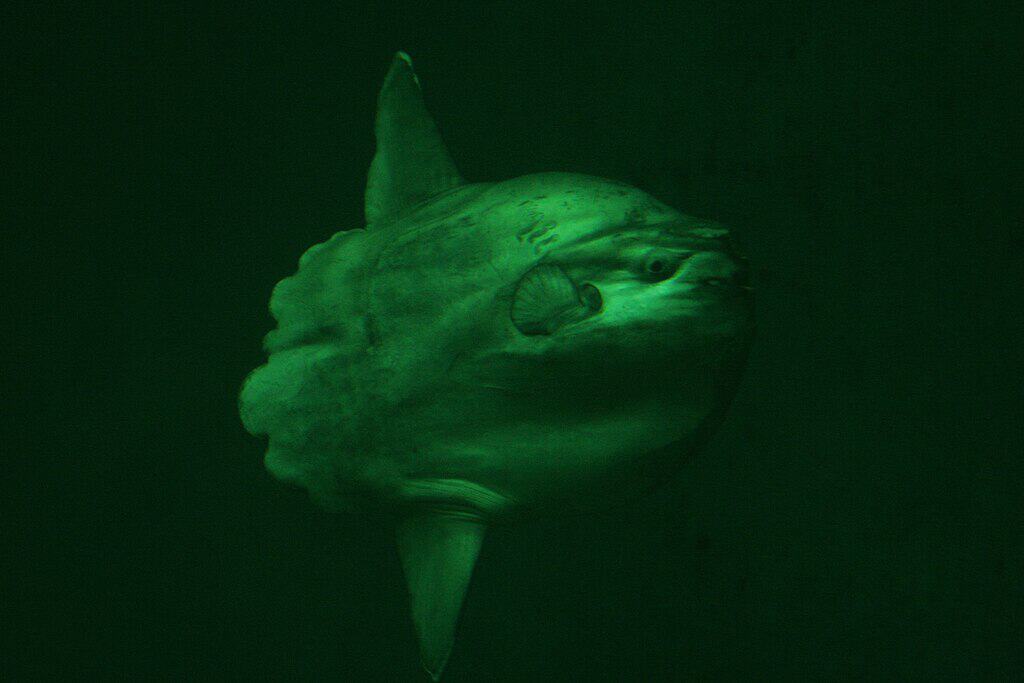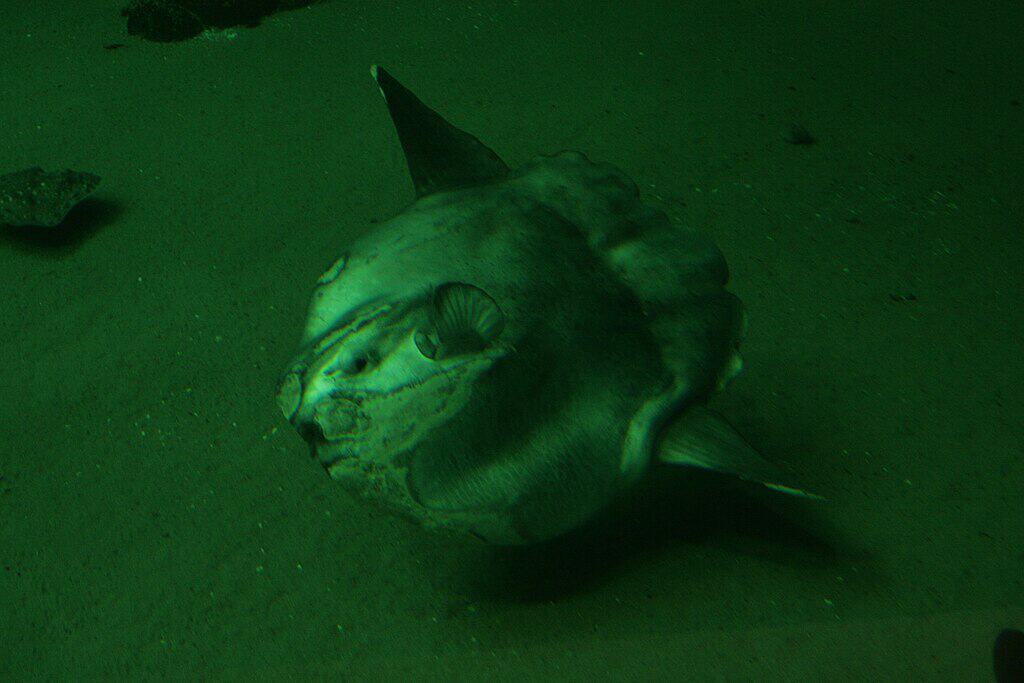The ocean sunfish, scientifically known as Mola mola, is a fascinating marine creature that leaves many puzzled due to its peculiar appearance and extraordinary size. Characterized by its flat body and enormous dorsal and ventral fins, this gentle giant can often be mistaken for a large fish head floating aimlessly through the ocean. Despite its odd dimensions, the ocean sunfish is a remarkable example of evolutionary adaptation in the marine world, and it captivates anyone with an interest in ocean life.
A Giant Among Fish

Ocean sunfish are known for their unrivaled size. They hold the title for being the heaviest bony fish in the world, with adult specimens weighing up to 2,200 pounds (about 1,000 kilograms) and measuring over 10 feet (3 meters) from fin to fin. Their massive size and curious body structure make them one of the ocean’s more unusual residents. Unlike other fish, the sunfish’s body is flattened laterally, lacking a true tail, and instead, they have a pseudo-tail called a clavus to help them navigate through the water.
A Mellow Marine Creature

Despite their impressive dimensions and intimidating appearance, ocean sunfish are gentle giants. They pose no threat to humans and spend much of their time drifting leisurely near the ocean surface. Their diet primarily consists of jellyfish, small fish, plankton, and algae, aligning with their calm demeanor. Sunfish often bask in the sun at the surface, possibly to regulate body temperature or invite birds to nibble parasites off their skin, providing dual benefits of warmth and hygiene.
Habitat and Distribution

Ocean sunfish inhabit temperate and tropical waters around the globe, making them frequent residents of the Atlantic, Pacific, and Indian Oceans. They are most often seen in open waters but can occasionally be found near shorelines or estuaries. Their wide distribution can be attributed to their ability to withstand different water temperatures and salinities, which aids their survival in various marine environments.
Reproductive Strategies

The reproductive habits of ocean sunfish are as extraordinary as their physique. Female sunfish can produce as many as 300 million eggs at a time, a record in the animal kingdom, providing an advantage in increasing their offspring’s chances of survival in the vast ocean. The larvae of sunfish are tiny, only about 0.1 inch (2.5 millimeters) in length, and undergo a significant transformation in order to reach their adult size.
Ecological Role and Conservation

Ocean sunfish play a vital role in their ecosystem as they control the populations of jellyfish and serve as prey for larger predators like sharks and orcas. However, they face conservation challenges, including threats from fishing nets, plastic pollution, and climate change. Due to their slow nature, sunfish often get caught in bycatch during commercial fishing, and plastic debris can be mistaken for their jellyfish prey, causing accidental ingestion, which is harmful or fatal.
Conclusion: Marvels of the Ocean

The ocean sunfish stands as a testament to the diverse array of life forms that inhabit our oceans. Its gentle nature, combined with its unconventional appearance, makes it a captivating subject for marine biologists, wildlife enthusiasts, and casual observers alike. Understanding and protecting these piscine giants are crucial, as they offer us insight into the complex web of life beneath the waves and highlight the importance of preserving marine biodiversity for future generations.
- The 10 Largest Stingrays Ever Found in American Waters - August 14, 2025
- 15 Loudest Animals on Earth - August 14, 2025
- 15 Common Mistakes When Caring for Pet Birds - August 14, 2025

